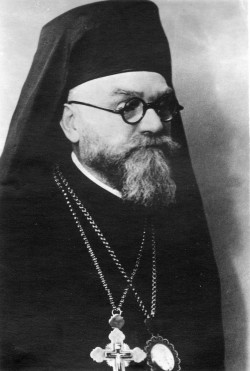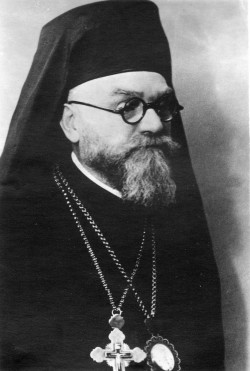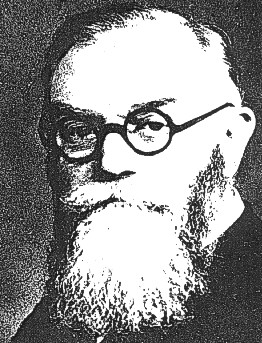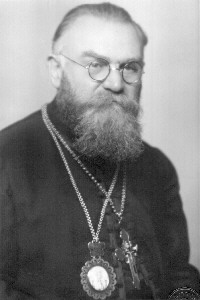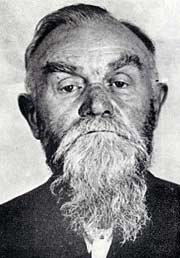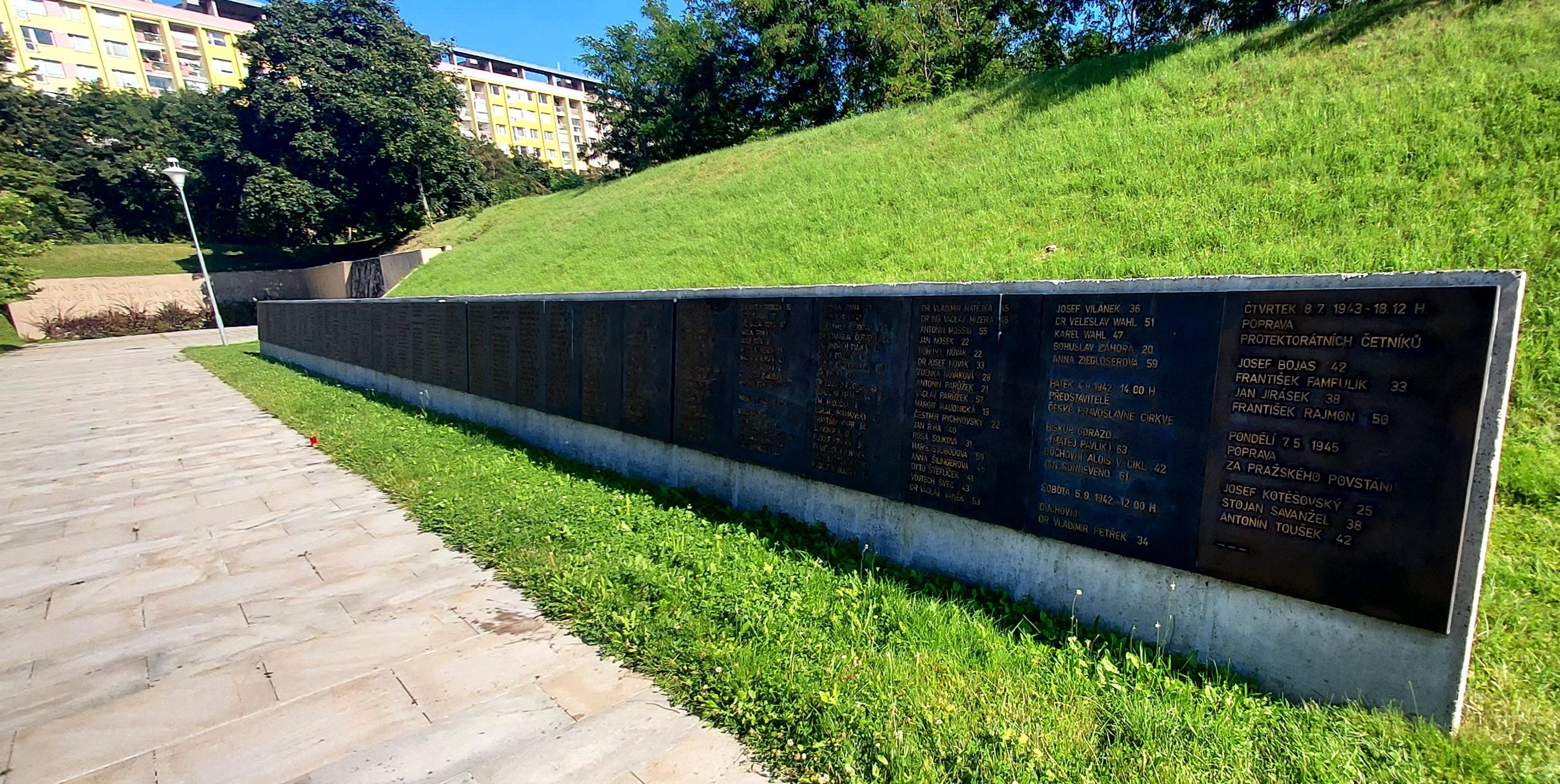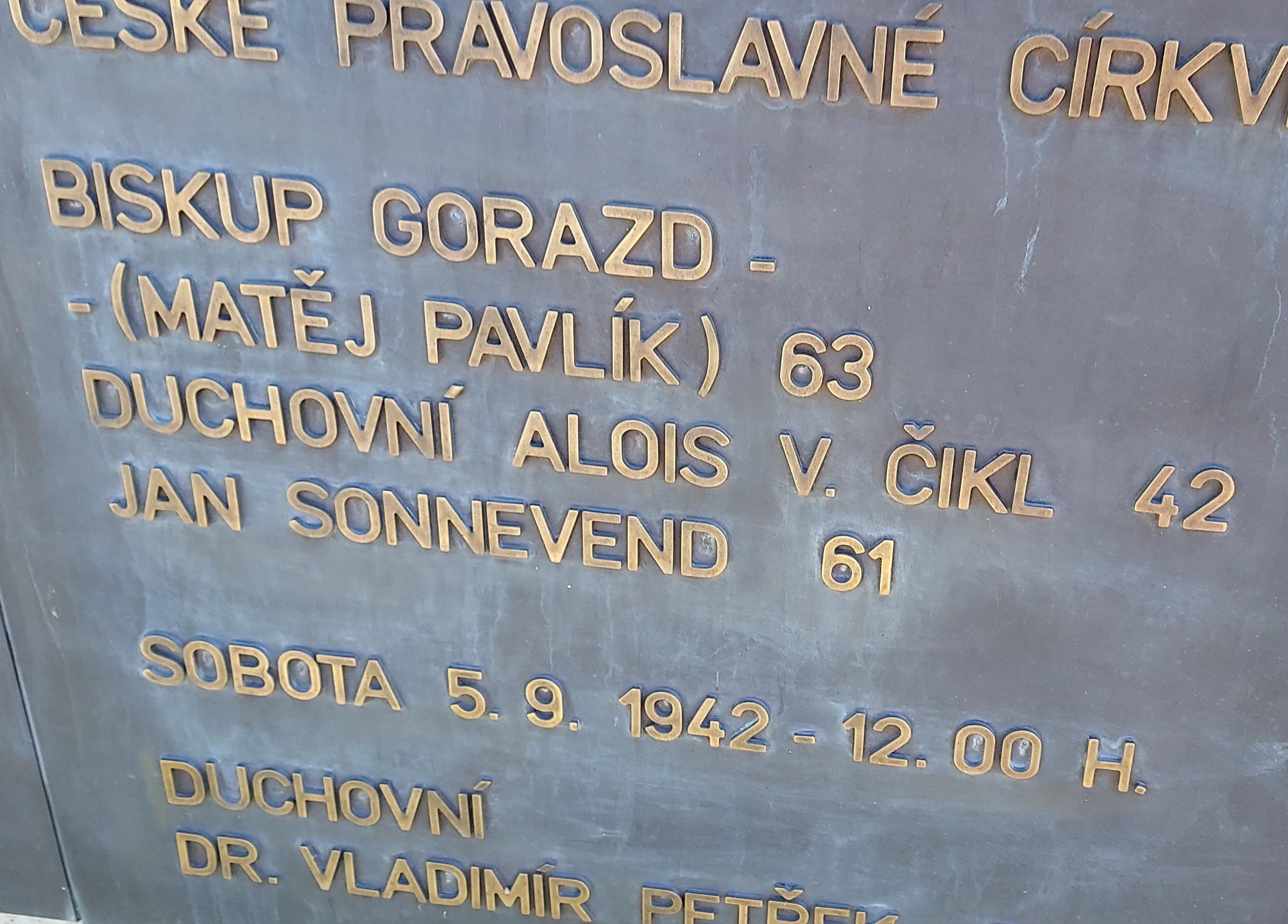Born on May 26, 1879, in the Moravian village of Hrubá Vrbka in what would later be the Czech Republic, he was raised into the Roman Catholic society of the Austro-Hungarian Empire, entering the Catholic Theological Faculty in Olomouc after finishing his earlier education. He was subsequently ordained to the priesthood. During his studies, he was interested in the mission of Saints Cyril and Methodius and of Eastern Orthodoxy.
With the end of the Great War and the establishment of the new country Czechoslovakia, the laws requiring Catholicism were relaxed. In this environment, many people left the Catholic Church, and many looked to Eastern Orthodoxy. Fr. Pavlík was among them. The Serbian Orthodox Church provided a shelter for those looking to Orthodoxy. As a leader in Moravia, the Church of Serbia agreed to consecrate Fr. Pavlík to the episcopate for his homeland. On September 24, 1921, he was consecrated bishop with the name of Gorazd.
Historically, his monastic name of Gorazd was significant as it was the name of the bishop who succeeded St. Methodius as Bishop of Moravia after he died in 885. Subsequently, Pope Stephen V drove the disciples of St. Methodius from Moravia as the Latin Rite was imposed. Thus, by the choice of his monastic name of Gorazd, the continuity of the Orthodox Church in Moravia from some eleven hundred years before was recognized.
Archimandrite Gorazd was named Bishop of Moravia and Silesia on September 24, 1921, and consecrated Bishop on the next day at the Cathedral of the Holy Archangel Michael in Belgrade, Yugoslavia, by Patriarch Dimitrije.
Over the next decade or so, Bishop Gorazd and his faithful followers organized parishes and built churches in Bohemia. In all they built eleven churches and two chapels. He had the essential service books translated and published in the Czech language, which was the language used in the church services. With Subcarpatho-Russia and Slovakia part of Czechoslovakia, he assisted many who had returned to their ancestral Orthodox faith.
With the conquest of Czechoslovakia by the Nazis in 1938, the church was placed under the Metropolitan in Berlin, Germany. Reinhard Heydrich was appointed as ruler of Czechoslovakia. On May 27, 1942, a group of Czech resistance fighters attacked and killed Heydrich. In making their escape, the group found refuge in the crypt of the Cathedral. When Bp. Gorazd found out a few days later, he recognized the serious burden this placed on the Czech Orthodox Church. Before he left for the consecration to the episcopate of Fr. John Gardner in Berlin, he asked that the resistance fighters move elsewhere as soon as possible. However, on June 18, the Nazis found out the hiding places after a betrayal by two members of the resistance group, and all the members of the group were killed.
Reprisals came quickly. The two priests and the senior lay church officials were arrested. Bp. Gorazd, wishing to help his fellow believers and the Czech Church itself, took the blame for the actions in the cathedral on himself, even writing letters to the Nazi authorities. On June 27, 1942, he was arrested and tortured. On September 4, 1942, Bishop Gorazd, the cathedral priests and the lay officials were executed by firing squad.
The reprisals went much further as the Nazis conducted widespread roundups of Czechs, including the whole village of Lidice, then summarily killed the men and placed the survivors in forced labor camps. The Orthodox churches in Moravia and Bohemia were closed and the Church forbidden to operate. Metropolitan Seraphim courageously refused to issue any statement condemning Bp. Gorazd. It wasn't until the end of the war that the Orthodox Church in Czechoslovakia would function again.
On May 4, 1961, the Serbian Orthodox Church recognized Bp. Gorazd as a new martyr, and on August 24, 1987, he was glorified in the Cathedral of St. Gorazd in Olomouc in Moravia.
Born on May 26, 1879, in the Moravian village of Hrubá Vrbka in what would later be the Czech Republic, he was raised into the Roman Catholic society of the Austro-Hungarian Empire, entering the Catholic Theological Faculty in Olomouc after finishing his earlier education. He was subsequently ordained to the priesthood. During his studies, he was interested in the mission of Saints Cyril and Methodius and of Eastern Orthodoxy.
With the end of the Great War and the establishment of the new country Czechoslovakia, the laws requiring Catholicism were relaxed. In this environment, many people left the Catholic Church, and many looked to Eastern Orthodoxy. Fr. Pavlík was among them. The Serbian Orthodox Church provided a shelter for those looking to Orthodoxy. As a leader in Moravia, the Church of Serbia agreed to consecrate Fr. Pavlík to the episcopate for his homeland. On September 24, 1921, he was consecrated bishop with the name of Gorazd.
Historically, his monastic name of Gorazd was significant as it was the name of the bishop who succeeded St. Methodius as Bishop of Moravia after he died in 885. Subsequently, Pope Stephen V drove the disciples of St. Methodius from Moravia as the Latin Rite was imposed. Thus, by the choice of his monastic name of Gorazd, the continuity of the Orthodox Church in Moravia from some eleven hundred years before was recognized.
Archimandrite Gorazd was named Bishop of Moravia and Silesia on September 24, 1921, and consecrated Bishop on the next day at the Cathedral of the Holy Archangel Michael in Belgrade, Yugoslavia, by Patriarch Dimitrije.
Over the next decade or so, Bishop Gorazd and his faithful followers organized parishes and built churches in Bohemia. In all they built eleven churches and two chapels. He had the essential service books translated and published in the Czech language, which was the language used in the church services. With Subcarpatho-Russia and Slovakia part of Czechoslovakia, he assisted many who had returned to their ancestral Orthodox faith.
With the conquest of Czechoslovakia by the Nazis in 1938, the church was placed under the Metropolitan in Berlin, Germany. Reinhard Heydrich was appointed as ruler of Czechoslovakia. On May 27, 1942, a group of Czech resistance fighters attacked and killed Heydrich. In making their escape, the group found refuge in the crypt of the Cathedral. When Bp. Gorazd found out a few days later, he recognized the serious burden this placed on the Czech Orthodox Church. Before he left for the consecration to the episcopate of Fr. John Gardner in Berlin, he asked that the resistance fighters move elsewhere as soon as possible. However, on June 18, the Nazis found out the hiding places after a betrayal by two members of the resistance group, and all the members of the group were killed.
Reprisals came quickly. The two priests and the senior lay church officials were arrested. Bp. Gorazd, wishing to help his fellow believers and the Czech Church itself, took the blame for the actions in the cathedral on himself, even writing letters to the Nazi authorities. On June 27, 1942, he was arrested and tortured. On September 4, 1942, Bishop Gorazd, the cathedral priests and the lay officials were executed by firing squad.
The reprisals went much further as the Nazis conducted widespread roundups of Czechs, including the whole village of Lidice, then summarily killed the men and placed the survivors in forced labor camps. The Orthodox churches in Moravia and Bohemia were closed and the Church forbidden to operate. Metropolitan Seraphim courageously refused to issue any statement condemning Bp. Gorazd. It wasn't until the end of the war that the Orthodox Church in Czechoslovakia would function again.
On May 4, 1961, the Serbian Orthodox Church recognized Bp. Gorazd as a new martyr, and on August 24, 1987, he was glorified in the Cathedral of St. Gorazd in Olomouc in Moravia.
Sponsored by Ancestry
Advertisement
Advertisement
